Nationality Irish Name Gottfried Helnwein | Role Visual artist Spouse Renate Helnwein | |
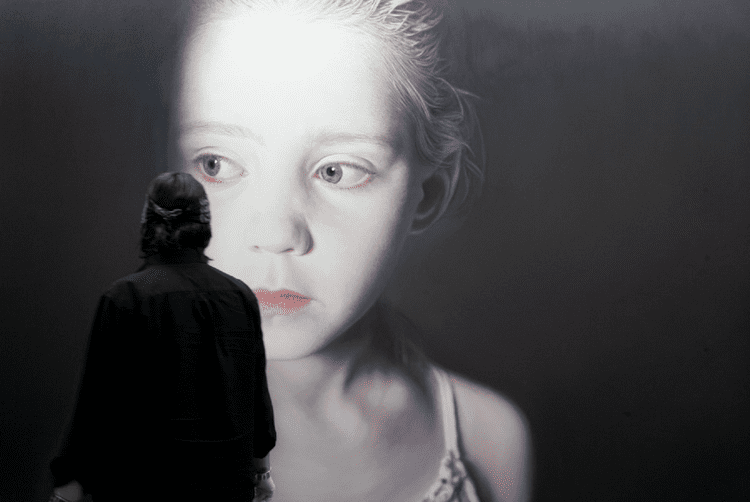 | ||
Notable work Ninth November Night (1988), Epiphany I (Adoration of the Magi) (1996), Disasters of War 3 (2007), The Murmur of the Innocents 14 (2010), I Walk Alone (2003), Peinlich (1971) Movement Hyperrealism, Installation art, Performance art Artwork Head of a Child, Epiphany I (Adoration of the Magi) Children Mercedes Helnwein, Cyril Helnwein, Ali Elvis Helnwein, Wolfgang Amadeus Helnwein Siblings Elfriede Helnwein, Maria Helnwein, Elisabeth Helnwein Grandchildren Eala Cheyenne Helnwein, Louisiana Kidd Helnwein, Captain Solas Wyatt Helnwein, Croi Sequoia Helnwein Similar People Mercedes Helnwein, Cyril Helnwein, Kojii Helnwein Profiles | ||
Gottfried helnwein retrospektive ausstellung in wien fotorealist paintings on violence
Gottfried Helnwein (born 8 October 1948) is an Austrian-Irish visual artist. He has worked as a painter, draftsman, photographer, muralist, sculptor, installation and performance artist, using a wide variety of techniques and media.
Contents
- Gottfried helnwein retrospektive ausstellung in wien fotorealist paintings on violence
- Gottfried helnwein the dreaming child
- Life
- Work
- The Child
- Self portraits
- Comics and trivial art
- References to the Holocaust
- Works for the stage
- Chronology
- Quotes
- Selected publications
- References
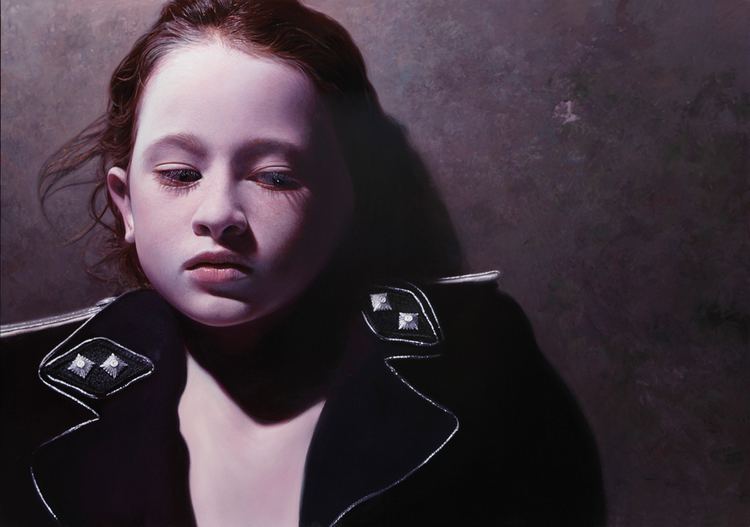
His work is concerned primarily with psychological and sociological anxiety, historical issues and political topics. His subject matter is the human condition. The metaphor for his art is dominated by the image of the child, particularly the wounded child, scarred physically and emotionally from within. His works often reference taboo and controversial issues from recent history, especially the Nazi rule and the horror of the Holocaust. As a result, his work is often considered provocative and controversial.
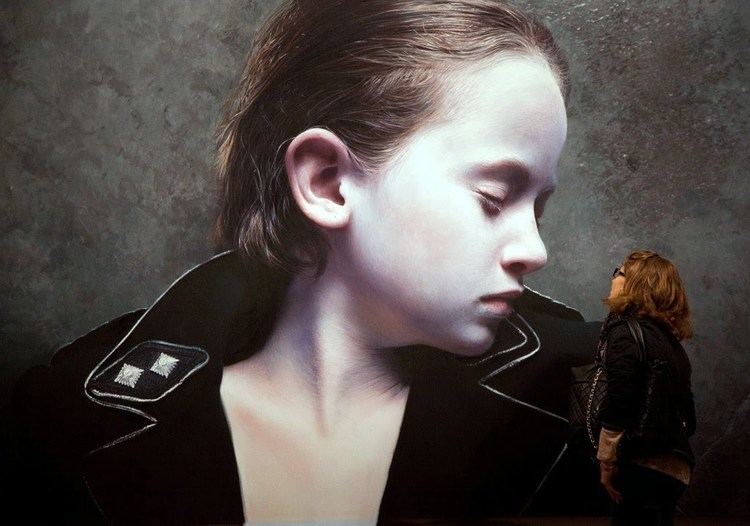
Helnwein studied at the University of Visual Art in Vienna (Akademie der Bildenden Künste, Wien). He lives and works in Ireland and Los Angeles.
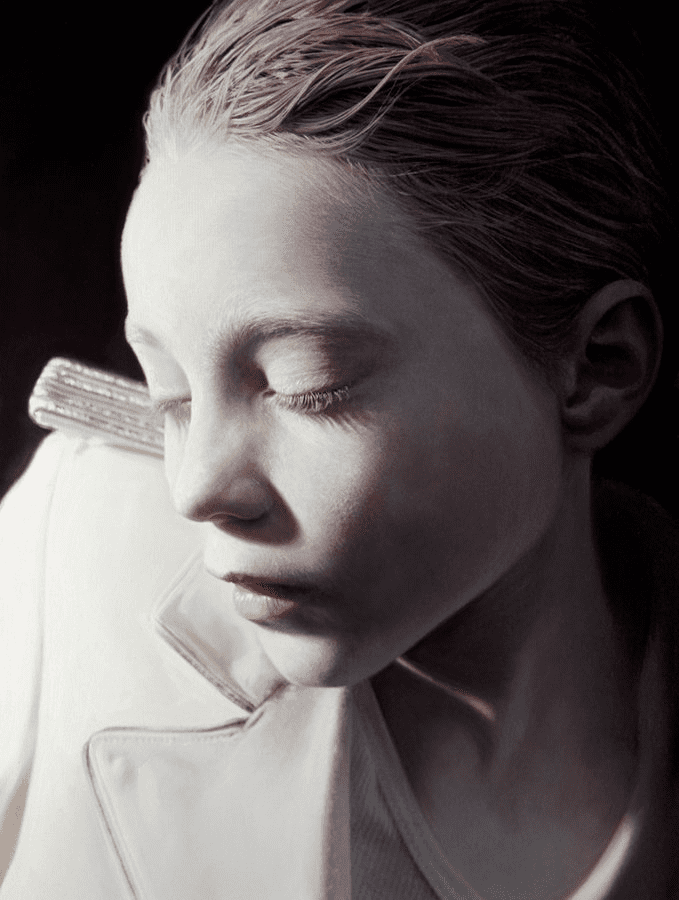
Gottfried helnwein the dreaming child
Life
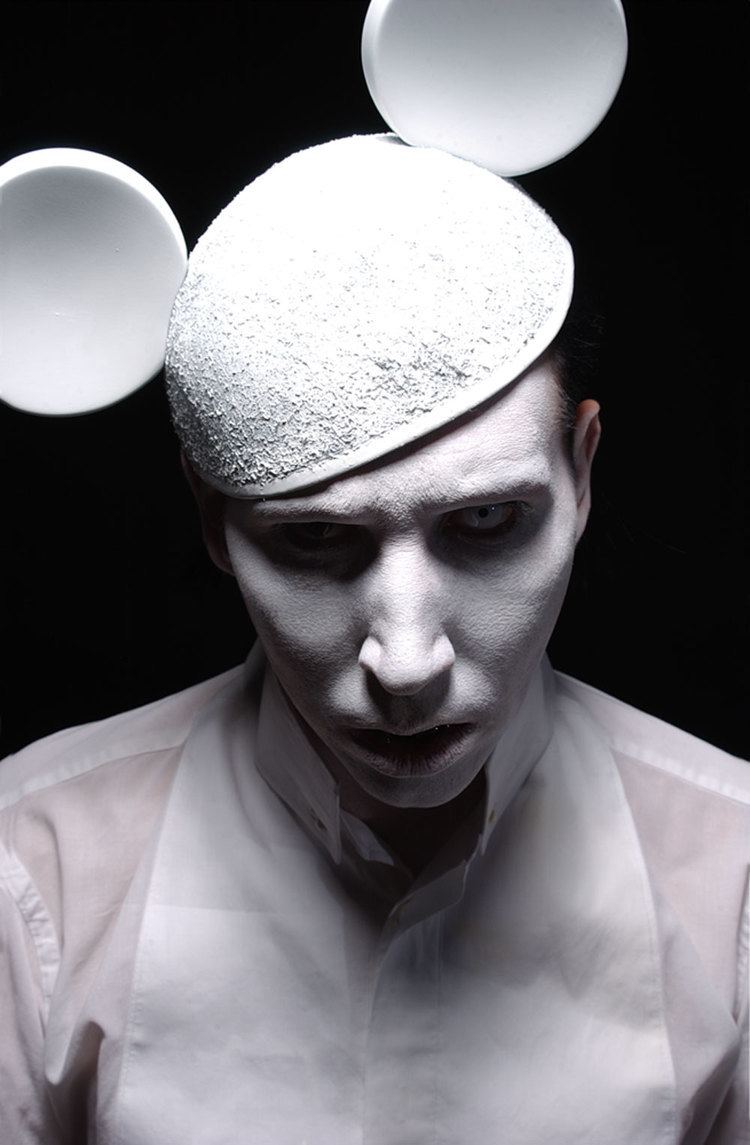
Helnwein was born in Vienna shortly after World War II. His father Joseph Helnwein worked for the Austrian Post and Telegraphy administration (Österreichische Post- und Telegraphenverwaltung), and his mother Margarethe was a housewife.
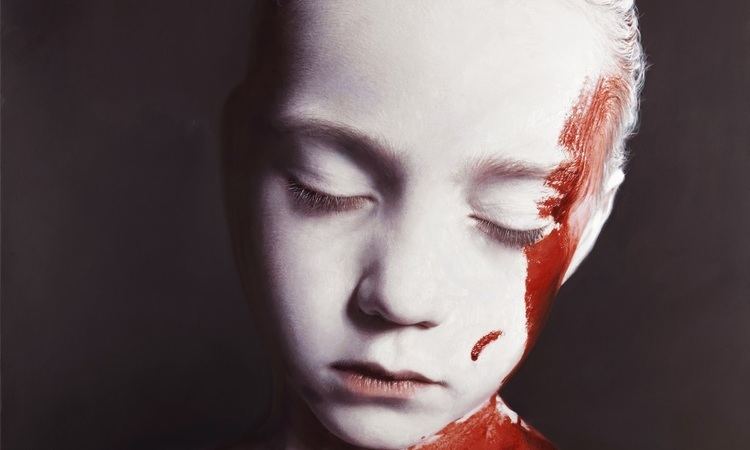
Helnwein spent his childhood in a strict Roman Catholic upbringing. As a student he organized plays and art exhibitions at the Catholic Marian Society (Marianische Kongregation) of the Jesuit University Church in Vienna.
1965 he enrolled at the "Higher Federal Institution for Graphic Education and Experimentation" in Vienna (Höhere Bundes-Graphische Lehr- und Versuchsanstalt, Wien). In the following years he started his first performances for small audiences where he cut his face and hands with razor blades and bandaged himself.
From 1969 to 1973 he studied at the University of Visual Art in Vienna (Akademie der Bildenden Künste, Wien). He was awarded the Master-class prize (Meisterschulpreis) of the University of Visual Art, Vienna, the Kardinal-König prize and the Theodor-Körner prize.
In 1983 Helnwein met Andy Warhol in his factory in New York City, who posed for a series of photo-sessions.
Helnwein was offered a chair by the University of Applied Sciences in Hamburg in 1982. When his demand to admit also children to study at the university was rejected, he declined.
In 1985 Rudolf Hausner, recommended Helnwein as his successor as professor of the master-class for painting at the University of Visual Art in Vienna, but Helnwein left Vienna and moved to Germany.
He bought a medieval castle close to Cologne and the Rhine-river. Four years later in 1989 he established a studio in Tribeca New York and thenceforth spent his time between the United States and Germany.
Helnwein moved to Dublin, Ireland in 1997 and one year later, he bought Castle Gurteen de la Poer in County Waterford. In 2002 he established a studio in downtown Los Angeles and he lives and works since then in Ireland and Los Angeles. Helnwein has four children with his wife Renate: Cyril, Mercedes, Ali Elvis and Wolfgang Amadeus, who are all artists. In 2004 Helnwein received Irish citizenship.
On 3 December 2005, his friend Marilyn Manson and Dita Von Teese were married in a private, non-denominational ceremony at Helnwein's castle. The wedding was officiated by surrealist film director Alejandro Jodorowsky Gottfried Helnwein was best man
In 2013 the Albertina Museum in Vienna organized a retrospective of Helnwein's work. The show was seen by 250.000 visitors and was the most successful exhibition of a contemporary artist in the history of the Albertina.
Work
Helnwein is part of a tradition going back to the 18th century, to which Messerschmidt's grimacing sculptures belong. One sees, too, the common ground of his works with those of Arnulf Rainer and Hermann Nitsch, two other Viennese, who display their own bodies in the frame of reference of injury, pain, and death. And one sees how this fascination with body language goes back to the expressive gesture in the work of Egon Schiele.
The Child
Helnwein's early work consists mainly of hyper-realistic watercolors, depicting wounded children, as well as photographs and performances – often with children – in public spaces. The bandaged child became the most important figure next to the artist himself allied with him in his actions. The child as the embodiment of the innocent, defenceless individual at the mercy of brute force.
Art historian Peter Gorsen specified the relation between Helnwein’s work and Viennese Actionism:
"Helnwein must be set apart from Viennese Actionism as he does not reduce the child's body to mere aesthetic material (as in the "material actions" of Günter Brus, Hermann Nitsch, and Otto Muehl), but instead endows it with a symbolic function in representing defenceless, sacrificed man. The sexualistic concept of the child in (Freud-influenced) Viennese Actionism is countered by the moralist and utopian Helnwein with the child as a sexless salvation figure."
In 2004, The Fine Arts Museums of San Francisco organized the first one-person exhibition of Gottfried Helnwein at an American Museum: "The Child, works by Gottfried Helnwein" at the California Palace of the Legion of Honor.
Harry S. Parker III, Director of the Fine Arts Museums of San Francisco stated: "For Helnwein, the child is the symbol of innocence, but also of innocence betrayed. In today's world, the malevolent forces of war, poverty, and sexual exploitation and the numbing, predatory influence of modern media assault the virtue of children. Helnwein's work concerning the child includes paintings, drawings, and photographs, and it ranges from subtle inscrutability to scenes of stark brutality. Of course, brutal scenes – witness The Massacre of the Innocents – have been important and regularly visited motifs in the history of art. What makes Helnwein's art significant is its ability to make us reflect emotionally and intellectually on the very expressive subjects he chooses. Many people feel that museums should be a refuge in which to experience quiet beauty divorced from the coarseness of the world. This notion sells short the purposes of art, the function of museums, and the intellectual curiosity of the public. The Child: Works by Gottfried Helnwein will inspire and enlighten many; it is also sure to upset some. It is not only the right but the responsibility of the museum to present art that deals with important and sometimes controversial topics in our society".
The show was seen by almost 130,000 visitors and the San Francisco Chronicle quoted it the most important exhibition of a contemporary artist in 2004. Steven Winn, Chronicle Arts and Culture Critic, wrote: "Helnwein's large format, photo-realist images of children of various demeanors boldly probed the subconscious. Innocence, sexuality, victimization and haunting self-possession surge and flicker in Helnwein's unnerving work".
Self portraits
At the same time when Helnwein painted watercolors of injured and abused children, from 1969, around 1970/71 he also began a series of self-portrayals in photographs and performances (actions) in his studio and in the streets of Vienna. Actionistic self-portrayals in the manner of a happening featuring his injured and bandaged body and surgical instruments deforming his face go back to Helnwein's student days. Since then, bandages have become part of the aesthetic "uniform" of his self-portraits.
The artist exposed himself as victim and martyr: bandages around his head and forks and surgical instruments piercing his mouth or cheek. Frequently the distortions of these tormented images make it difficult to recognize Helnwein's face. He appears as a screaming man, mirroring the frightening aspects of life: a twentieth-century Man of Sorrows. His frozen cry, showing the artist in a state of implacable trauma, recalls Edvard Munch 's "Scream" and Francis Bacon 's screaming popes. Some of Helnwein's grimacing faces also recall the grotesque physiognomic distortions by the eighteenth-century Viennese sculptor Franz Xavier Messerschmidt. They could also be seen as part of the Austrian pictorial tradition that resurfaced in the perturbed and distorted expressionist faces painted by Kokoschka and Egon Schiele before World War I, reappearing in the exaggerated mimicry in Arnulf Rainer's "Face Farces."
William S. Burroughs commented on Helnwein's self-portraits in an essay in 1992: "There is a basic misconception that any given face, at any given time, looks more or less the same, like a statue's face. Actually, the human face is as variable from moment to moment as a screen on which images are reflected, from within and from without. Gottfried Helnwein's paintings and photographs attack this misconception, showing the variety of faces of which any face is capable. And in order to attack the basic misconception, he must underline and exaggerate by distortion, by bandages and metal instruments that force the face into impossible molds. Images of torture and madness abound, as happens from moment to moment in the face seen as a sensitive reflection of extreme perceptions and experience. How can a self-portrait depict statuesque calm in the face of the horrors that surround us all?"
The central importance of the "self-portrait" in Helnwein's work, the mutable art of a doppelganger, is no accident. It becomes the projection surface of world events. "The artist doesn't make history, history makes him" (Auguste Comte). The artist's doppelganger role as victim and perpetrator, martyr and satyr, penitent and accuser, proxy and self-portrayer, moralist and autist, and in many other metamorphoses embodies and stages the antagonistic social forces on a stage of his inner-world consciousness.
In a conversation with Robert A. Sobieszek, curator of the Los Angeles County Museum of Art, Helnwein declared: " The reason why I took up the subject of self-portraits and why I have put myself on stage was to function as a kind of representative for the suffering, abused and oppressed human being. I needed a living body to demonstrate and exemplify the effect of violence inflicted upon a defenseless victim. There is nothing autobiographical or therapeutical about it, and I don’t think it says anything about me personally. Also I was the best possible model for my experiments: endlessly patient and always available."
Comics and trivial art
Another strong element in his works are comics. Helnwein has sensed the superiority of cartoon life over real life ever since he was a child. Growing up in a dreary, destroyed post-war Vienna, the young boy was surrounded by unsmiling people, haunted by a recent past they could never speak about. What changed his life was the first German-language Donald Duck comic book that his father brought home one day. Opening the book felt like finally arriving in a world where he belonged:
"...a decent world where one could get flattened by steam-rollers and perforated by bullets without serious harm. A world in which the people still looked proper, with yellow beaks or black knobs instead of noses." (Helnwein)
In 2000, the San Francisco Museum of Modern Art presented Helnwein's painting "Mouse I" (1995, oil and acrylic on canvas, 210 cm x 310 cm) at the exhibition The Darker Side of Playland: Childhood Imagery from the Logan Collection.
Alicia Miller commented on Helnwein's work in Artweek: "In 'The Darker Side of Playland', the endearing cuteness of beloved toys and cartoon characters turns menacing and monstrous. Much of the work has the quality of childhood nightmares. In those dreams, long before any adult understanding of the specific pains and evils that live holds, the familiar and comforting objects and images of a child's world are rent with something untoward. For children, not understanding what really to be afraid of, these dreams portend some pain and disturbance lurking into the landscape. Perhaps nothing in the exhibition exemplifies this better than Gottfried Helnwein's 'Mickey'. His portrait of Disney's favorite mouse occupies an entire wall of the gallery; rendered from an oblique angle, his jaunty, ingenuous visage looks somehow sneaky and suspicious. His broad smile, encasing a row of gleaming teeth, seems more a snarl or leer. This is Mickey as Mr. Hyde, his hidden other self now disturbingly revealed. Helnwein's Mickey is painted in shades of gray, as if pictured on an old black-and-white TV set. We are meant to be transported to the flickering edges of our own childhood memories in a time imaginably more blameless, crime-less and guiltless. But Mickey's terrifying demeanor hints of things to come...".
Although Helnwein's work is rooted in the legacy of German expressionism, he has absorbed elements of American pop culture. In the 1970s, he began to include cartoon characters in his paintings. In several interviews he claimed: "I learned more from Donald Duck than from all the schools that I have ever attended." Commenting on that aspect in Helnwein's work, Julia Pascal wrote in the New Statesman: "His early watercolor Peinlich (Embarrassing) shows a typical little 1950s girl in a pink dress and carrying a comic book. Her innocent appeal is destroyed by the gash deforming her cheek and lips. It is as if Donald Duck had met Mengele".
Living between Los Angeles and Ireland, Helnwein met and photographed the Rolling Stones in London, and his portrait of John F. Kennedy made the front cover of Time magazine on the 20th anniversary of the president's assassination. His Self-portrait as screaming bandaged man, blinded by forks (1982) became the cover of the Scorpions album Blackout. Andy Warhol, Muhammad Ali, William Burroughs and the German industrial metal band Rammstein posed for him; some of his art-works appeared in the cover-booklet of Michael Jackson's History album. Referring to the fall of the Berlin Wall Helnwein created the book Some Facts about Myself, together with Marlene Dietrich. In 2003 he became friends with Marilyn Manson and started a collaboration with him on the multi-media art-project The Golden Age of Grotesque and on several experimental video-projects. Among his widely published works is a spoof of the famous Edward Hopper painting Nighthawks, entitled Boulevard of Broken Dreams, depicting Elvis Presley, Marylin Monroe, James Dean and Humphrey Bogart. This painting also inspired the Green Day song of the same name.
Examining his imagery from the 1970s to the present, one sees influences as diverse as Bosch, Goya, John Heartfield, Beuys and Mickey Mouse, all filtered through a postwar Viennese childhood. 'Helnwein's oeuvre embraces total antipodes: The trivial alternates with visions of spiritual doom, the divine in the child contrasts with horror-images of child-abuse. But violence remains to be his basic theme – the physical and the emotional suffering, inflicted by one human being unto another.'
References to the Holocaust
1988 in remembrance of Kristallnacht (Cristal Night) 50 years earlier, Helnwein erected a large installation in the city center of Cologne, between Ludwig Museum and the Cologne Cathedral: Selektion - Neunter November Nacht ("Selektion - Ninth November Night) A four-meter-high, hundred-meter-long picture lane in which the artist recalls the events of Reichskristallnacht, the actual beginning of the Holocaust, on 9 November 1938. He confronts the passersby with larger-than-life children's faces lined up in a seemingly endless row, as if for concentration camp selection. Just days into the exhibit, these portraits were vandalized by unknown persons, symbolically cutting the throats of the depicted children's faces. Helnwein consciously left the panels with the gashes and included them into the presentation, because he decided it made the work stronger and more relevant.
Mitchell Waxman wrote 2004, in The Jewish Journal, Los Angeles: "The most powerful images that deal with Nazism and Holocaust themes are by Anselm Kiefer and Helnwein, although, Kiefer's work differs considerably from Helnwein's in his concern with the effect of German aggression on the national psyche and the complexities of German cultural heritage. Kiefer is known for evocative and soulful images of barren German landscapes. But Kiefer and Helnwein's work are both informed by the personal experience of growing up in a post-war German speaking country... William Burroughs said that the American revolution begins in books and music, and political operatives implement the changes after the fact. To this maybe we can add art. And Helnwein's art might have the capacity to instigate change by piercing the veil of political correctness to recapture the primitive gesture inherent in art.".
One of the best known paintings of Helnwein's oeuvre is Epiphany I – Adoration of the Magi, (1996, oil and acrylic on canvas, 210 cm x 333 cm, collection of the Denver Art Museum). It is part of a series of three paintings: Epiphany I, Epiphany II (Adoration of the Shepherds), Epiphany III (Presentation at the Temple), created between 1996 and 1998. In Epiphany I, SS officers surround a mother and child group. To judge by their looks and gestures, they appear to be interested in details such as head, face, back and genitals. The arrangement of the figures clearly relates to motive and iconography of the adoration of the three Magi, such as were common especially in the German, Italian and Dutch 15th century artworks. Julia Pascal wrote about this work in the New Statesman: "This Austrian Catholic Nativity scene has no Magi bearing gifts. Madonna and child are encircled by five respectful Waffen SS officers palpably in awe of the idealised, blonde Virgin. The Christ toddler, who stands on Mary's lap, stares defiantly out of the canvas." Helnwein's baby Jesus is often considered to represent Adolf Hitler.
Works for the stage
Helnwein is also known for his stage and costume designs for theater, ballet and opera productions. Amongst them: "Macbeth" by William Shakespeare, (director, choreographer: Johann Kresnik), Theater Heidelberg, 1988, Volksbühne Berlin, 1995; "The Persecution and Murder of Jean-Paul Marat as Performed by the Inmates of the Asylum at Charenton under the Direction of the Marquis de Sade" by Peter Weiss, (director: Johann Kresnik), Stuttgart National Theatre, 1989; "Pasolini, Testament des Körpers", (director: Johann Kresnik), Deutsches Schauspielhaus Hamburg, 1996; "Hamletmaschine" by Heiner Müller, (director: Gert Hof), 47. Berliner Festwochen, Berlin 1997, Muffathalle, München, 1997; "The Rake's Progress" by Igor Stravinsky, (director: Jürgen Flimm), at Hamburg State Opera, 2001; "Paradise and the Peri", oratorio by Robert Schumann, (director, choreographer: Gregor Seyffert & Compagnie Berlin), Robert-Schumann-Festival 2004, Tonhalle Düsseldorf; Der Rosenkavalier" by Richard Strauss, (director: Maximilian Schell) at Los Angeles Opera, 2005, and Israeli Opera Tel Aviv, 2006;"Der Ring des Nibelungen, part I, Rheingold und Walküre", choreographic theatre after Richard Wagner, (director, choreographer: Johann Kresnik), Oper Bonn, 2006; "Der Ring des Nibelungen", part II, Siegfried and Götterdämmerung, director, choreographer: Johann Kresnik), Oper Bonn, 2008, "The Child Dreams", by Hanoch Levin, composer: Gil Shohat, directed by Omri Nitzan, Israeli Opera, Tel Aviv, 2009/2010, "Die 120 Tage von Sodom" ("Salò, or the 120 Days of Sodom"), nach de Sade und Pasolini, director: Johann Kresnik, Volksbühne Berlin, 2015. 2016 Helnwein became Honorary Member of iSTAN, the International Stage Art Network, a joint venture between the International Theatre Institute ITI and the Central Academy of Drama CAD Beijing.
Chronology
Quotes
William Burroughs said of Helnwein:
"It is the function of the artist to evoke the experience of surprised recognition: to show the viewer what he knows but does not know that he knows. Helnwein is a master of surprised recognition."Helnwein is one of the few exciting painters we have today.
Norman Mailer
Well, the world is a haunted house, and Helnwein at times is our tour guide through it. In his work he is willing to take on the sadness, the irony, the ugliness and the beauty. But not all of Gottfried's work is on a canvas. A lot of it is the way he's approached life. And it doesn't take someone knowing him to know that. You take one look at the paintings and you say "this guy has been around." You can't sit in a closet – and create this. This level of work is earned.
Sean Penn
Gottfried Helnwein is my mentor. His fight for expression and stance against oppression are reasons why I chose him as an artistic partner. An artist that doesn't provoke will be invisible. Art that doesn't cause strong emotions has no meaning. Helnwein has that internalized.
Marilyn Manson
Helnwein's subject matter is the human condition. The metaphor for his art is dominated by the image of the child, but not the carefree innocent child of popular imagination. Helnwein instead creates the profoundly disturbing yet compellingly provocative image of the wounded child. The child scarred physically and the child scarred emotionally from within.
Robert Flynn Johnson, Fine Arts Museums of San Francisco
Warhol is the pre-Helnwein ...
Dieter Ronte, Museum of Modern Art, Vienna
Selected publications
Retrospective at the Albertina Museum Vienna, Hatje Cantz, 2013
Klaus Albrecht Schröder, Elsy Lahner, Howard N. Fox, Siegfried Mattl, exhibition catalogue, (ISBN 978-3-7757-3584-1)
One man exhibition 2004, San Francisco Fine Arts Museums
Robert Flynn Johnson, Harry S. Parker, Robert Flynn Johnson, The Child – Works by Gottfried Helnwein,
(ISBN 978-0-88401-112-5)
One man exhibition 2006, Lentos Museum of Modern Art Linz
Stella Rollig, Thomas Edlinger, Nava Semel, Stella Rollig, Presence and Time: Gottfried Helnwein's Pictures
Christian Brandstätter, Wien 2006, (ISBN 978-3-902510-39-6)
Retrospective 2004, Rudolfinum Gallery Prague,
Peter Nedoma, 2008. Essay,
Peter Nedoma speaks with Gottfried Helnwein,
(ISBN 978-80-86443-11-9)
Retrospective 1997, State Russian Museum St. Petersburg
Alexander Borovsky, Klaus Honnef, Peter Selz, William Burroughs, Heiner Müller, H.C. Artmann, Klaus Honnef, Helnwein – The Subversive Power of Art,
Palace Edition 1997, (ISBN 978-3-930775-31-6), Koenemann 1999, (ISBN 978-3-8290-1448-9)
Documentary, Commemoration of the 65th Anniversary of Kristallnacht, Museum of Tolerance, Simon Wiesenthal Center, Los Angeles
Johnathon Keats, Simon Wiesenthal, Johnathon Keats, Helnwein – The Art of Humanity
